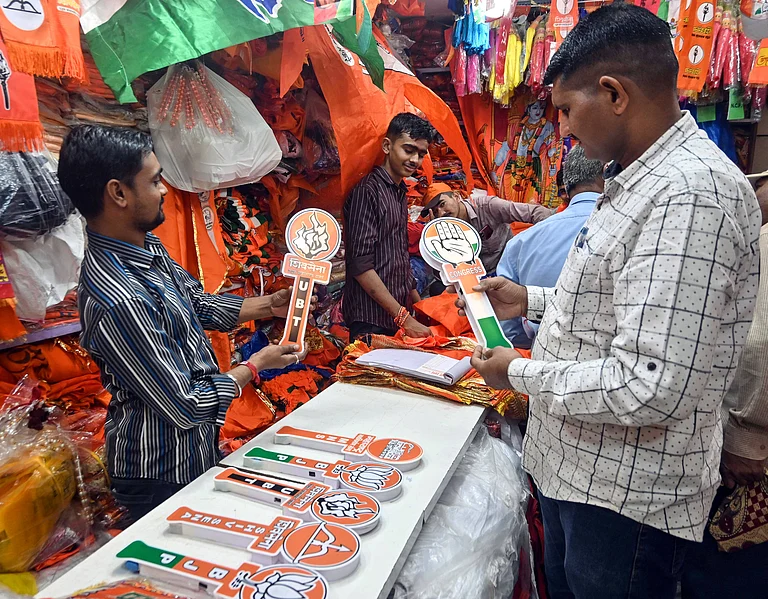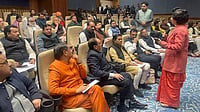The Constitution (One Hundred and Twenty Eighth Amendment) Bill, 2023 – better known as the women’s reservation bill – was introduced in the Lok Sabha on Tuesday as the first bill in the new Parliament building amid the ongoing special session. The bill, which has been in the making for the last 27 years, seeks to provide 33 per cent reservation to women.
The draft law was introduced by Union Law Minister Arjun Ram Meghwal and will be named ‘Narishakti Vandan Adhiniyam’. On paper, the bill aims at enabling greater participation of women in policy-making at the state and national levels. Prime Minister Narendra Modi, who spoke on the issue in his first speech in the new Parliament building, said that it has been pending for a long time. "We want that more and more women join the development process of the country."
However, the bill will have to cross several hurdles before being implemented, like getting consensus across political lines, census and the delimitation exercise. According to Article 82 of the Constitution, as amended in 2002, the delimitation process can be carried out based on the first Census taken after 2026. While the BJP described the bill as historic, praising the visionary leadership of Modi, parties including the Congress dubbed it as an election "jumla" ahead of the 2024 Lok Sabha elections.
While the bill seeks its passage in Lok Sabha and awaits implementation, here are a few of its key features:
One-Third Of Total Seats

The women’s reservation bill aims to reserve “as nearly as may be, one-third of the total number of seats” – which comes to about 33 per cent – for women in the Lok Sabha and state legislative assemblies. The amended bill also seeks to extend to the Legislative Assembly of the National Capital Territory of Delhi. For its passage, however, the bill will require ratification by at least 50 per cent of the states, according to provisions of Article 368. Their consent is needed as it affects their rights.
Reservation For SC/ST Women
According to the bill, one-third of the SC/ST quota will be reserved for women belonging to the Scheduled Castes and Scheduled Tribes. The same will be amended under Article 330 of the Constitution. However, there is no mention in the bill about the reservation for women belonging to Other Backward Castes (OBC).

Condition Of Census And Delimitation
One of the major points of contention in the bill is the condition of Census and the delimitation exercise. The women’s reservation bill tabled by the government states that the provisions related to the reservation of seats for women in the Lok Sabha, State Assemblies, and the Delhi Assembly will come into effect “after an exercise of delimitation is undertaken…after the relevant figures for the first census taken” on commencement of the Act.
This could stir a debate in Parliament with the opposition questioning the pre-requisite of holding a census – which was not held in 2021 – as well as the delimitation – which is expected to be held after 2026 and will continue for 15 years – before the proposed law is implemented.
Rotation Of Seats
The bill also allows for the rotation of the seats reserved for women in Lok Sabha, state legislative assemblies and the Delhi Assembly after each subsequent delimitation exercise, to be determined by the Parliament by law.
Reservation To Last Only For 15 Years
The bill specifies that the reservation for women will cease to have effect “on the expiration of a period of fifteen years from such commencement” of the Act.

There have been several efforts to introduce women's reservation bill in Lok Sabha and state legislative assemblies since 1996. The last such attempt was made in 2010 when the Rajya Sabha passed the 2008 bill, but the same was stalled in Lok Sabha. Data shows that women MPs account for nearly 15 per cent of Lok Sabha strength while their representation is below 10 per cent in many state assemblies.
A discussion on the bill for its passage in Lok Sabha is expected to start on Wednesday.


























